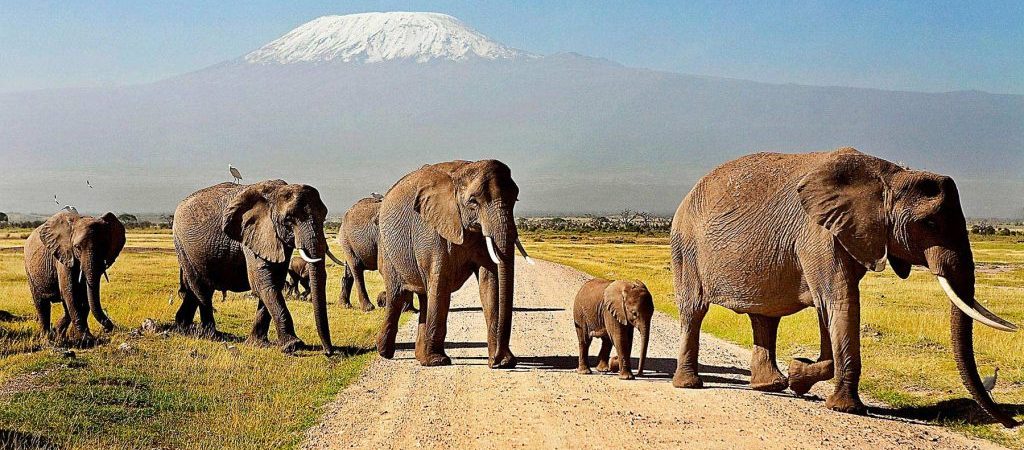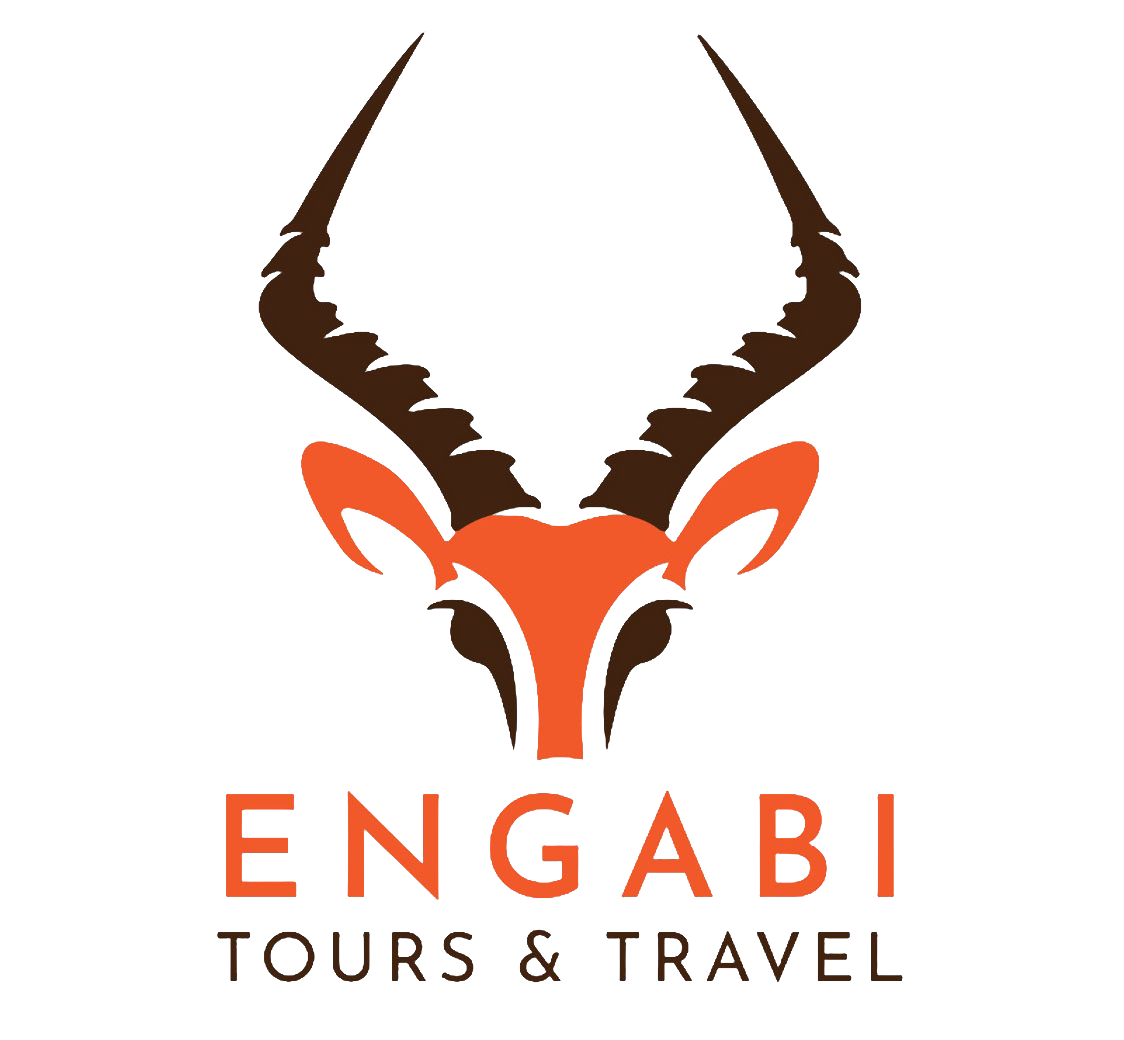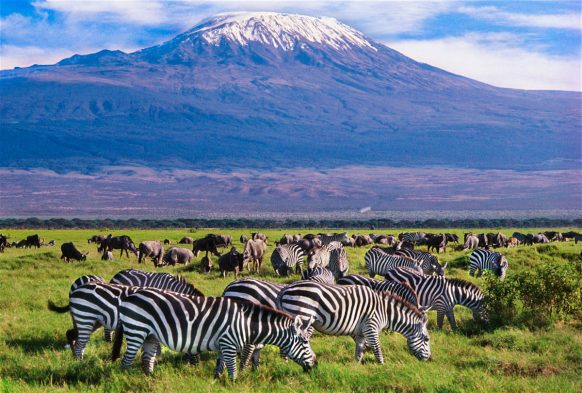One of the main safari destinations in Kenya is Amboseli National Park, which is 240 kilometers southeast of Nairobi, the country’s capital. The park is situated in the Loitoktok district of the Rift Valley. The name Amboseli national park comes from the local slag “Amboseli,” which means “Salty dust.” The park is also known as “the land of giants” due to the enormous number of large elephants with long trunks that roam freely in the park’s savannah plains.
Amboseli is situated against the backdrop of Mount Kilimanjaro, the largest free-standing mountain in Africa, which rises 589 meters above sea level. As the snow on the mountain melts, it creates the watering holes and mashes that can be found in the park.
The 392 square kilometer Amboseli National Park is home to a rare environment and a unique blend of geography, geology, hydrology, and cultural history. Open plains, acacia woodland, thorny shrubs and palm trees covering rock formations, marshes, and marshlands encircling Lake Amboseli are among the five diverse habitats that make up Amboseli. In nature, Lake Amboseli is a transient lake that fills during the rainy season when the park experiences significant rains. It is a Pleistocene lake basin.
Before being gazetted as a national park, Amboseli National Park was known as Empusel. It was established as a national park in 1974. The park was first formed in 1906 as a national wildlife reserve, and its name was changed to Amboseli national park in 1974 when it was given the status of a national park. Amboseli National Park was designated by UNESCO as a Man and the Biosphere reserve in 1991 due to the unique fusion of ecology and culture.
Amboseli national park is a well-liked stop on Kenya wildlife tours for great game viewing safaris. It is home to a variety of safari attractions, including animal and avian species. Big tusked elephants, cape buffaloes, lions, cheetahs, spotted hyenas, zebras, wildebeests, Grant’s and Thomson gazelles, impalas, hippos, and many other animals can be seen in Amboseli National Park.
With over 400 different bird species residing in the swamps, grasslands, and acacia forests of the park, Amboseli National Park is regarded as a top spot for Kenya birding watching safaris. Egrets, herons, pelicans, steel-blue whydahs, hornbills, African swamphens, common redshanks, taveta golden weavers, yellow-necked spurfowls, Sudan mabuyas, beautiful chameleons, viraible skinks, African stripped skinks, and many other species of birds may be found in Amboseli.
Kenya safari activities to do in Amboseli national park
Game viewing
Amboseli National Park is home to vast herds of elephants that may be seen wallowing in the murky waterways beside hippos. It has been acknowledged for providing outstanding wildlife viewing safaris and is included among the best sites for Kenya wildlife safari in Africa. On morning and afternoon game drives, you may see animals in the park. Among the creatures you can see are lions, cheetahs, giraffes, wildebeests, zebras, spotted hyenas, antelopes, and many others.
On Amboseli game viewing safaris, you may take in the breathtaking African sunrise and sunset over the area’s scenery.

Bird watching
More than 400 kinds of birds may be found in the park, including those that live near lakes, marshes, and savannah grasslands. The park is a top choice for bird watchers traveling to Kenya on Kenya birding trips. Amboseli National area’s bird watching safari provides views of many of the bird species that call the area home, including egrets, herons, pelicans, steel-blue whydahs, hornbills, African swamphens, common redshanks, taveta golden weavers, yellow-necked spurfowls, and many more.
Hot air balloon safaris
You shouldn’t skip a hot air balloon safari in Amboseli when on a safari in Kenya. Hot air balloon safaris are exhilarating safari activities that provide fantastic aerial views of Amboseli National Park from a ride suspended in the sky above the park’s landscape. Hot air balloon experiences begin as early as 6:00 am in the morning to take in the magnificent sunrise. You will see vast herds of elephants, wildebeest, zebras, giraffes, lions, leopards, and the snow-capped peak of Mount Kilimanjaro as you travel in the hot air balloon safari.
Cultural encounters
Amazing cultural experiences can be had in Amboseli. These trips are organized and carried out under the supervision of a game ranger who is informed about the masai people and their culture. They take you on a cultural encounter in the Maasai communities located on the park’s borders. Cultural interactions provide people a chance to get to know the Maasai people’s customs, norms, and cultures better. These encounters include opportunities to speak with elders, visit bomas, schools, and market centers, and learn more about things like cattle ranching, cultural dances, and theater.
How to get to Amboseli national park
The park is accessible by air and road and is located 240 kilometers southeast of Nairobi, Kenya’s capital and main tourist destination.
By road
By car, it takes about 4 hours to get from Nairobi’s main road to Amboseli via Namanga, which leads to Meshanani Gate. Another route to the park is Nairobi via email, which is 228 kilometers long and runs along Nairobi Mombasa Road. The ideal type of vehicle to utilize when traveling by road to the Amboseli National Park is a 4X4 wheel vehicle.
By air
An airfield for light aircraft is located at Empusel gate, and there are further optional airstrips at Kilimanjaro Buffalo Lodge and Namanga town. These are used to enter Amboseli National Park. Domestic/chartered flights are offered by a number of airlines, including AirKenya, Safarilink, and Mombasa Air Safari, from Nairobi’s Wilson Airport to several of the airstrips serving the park.
Accommodations in Amboseli National Park
Accommodations are provided by safari lodges and camps, which are divided into three categories: luxury, midrange, and cheap. Among these are Satao Elerai camp, Ol Donyo Lodge, Amboseli Serena Safari lodge, Ol Tukai Lodge, Amboseli Sopa Lodge, Campi ya Kanzi, Kibo Safari camp, Kilima Safari camp, and Ol Tukai Lodge.


